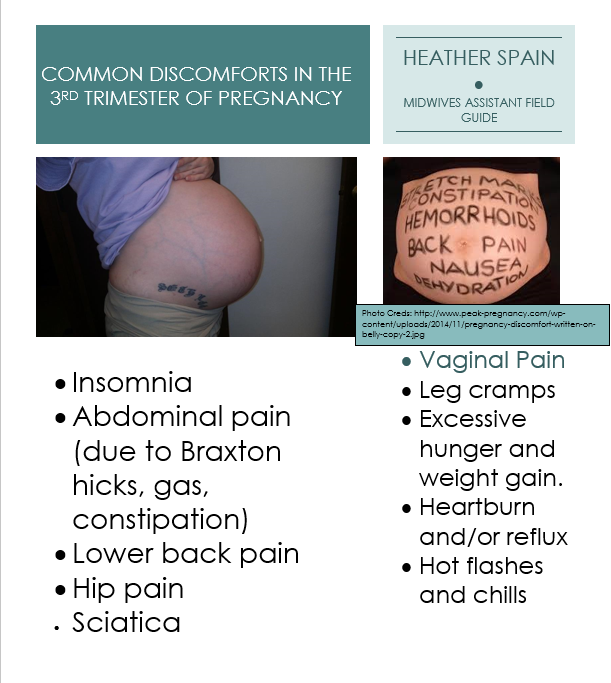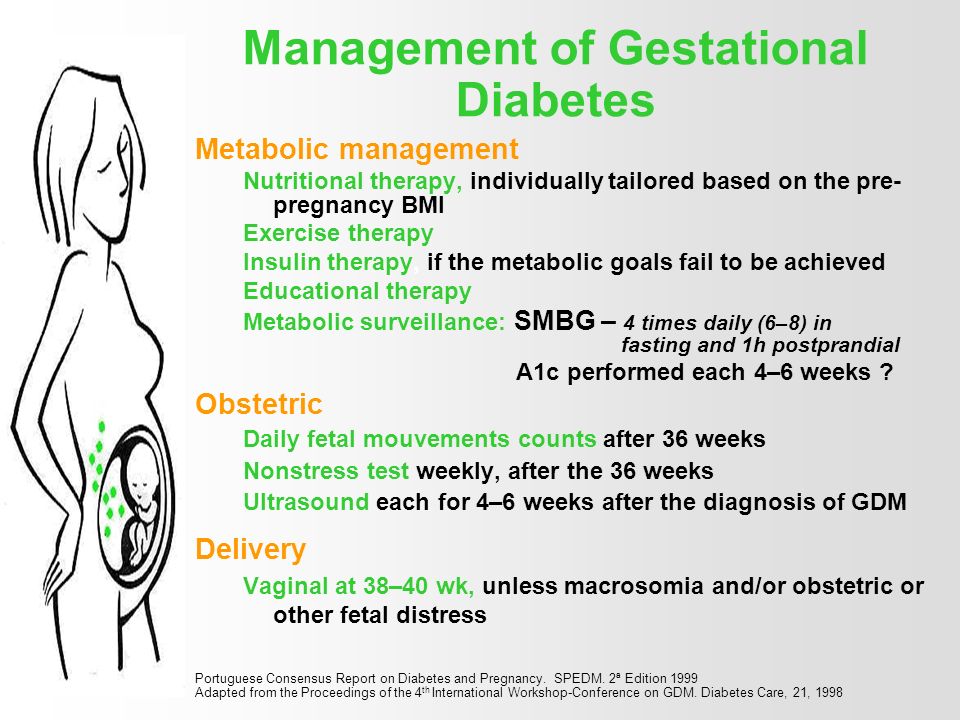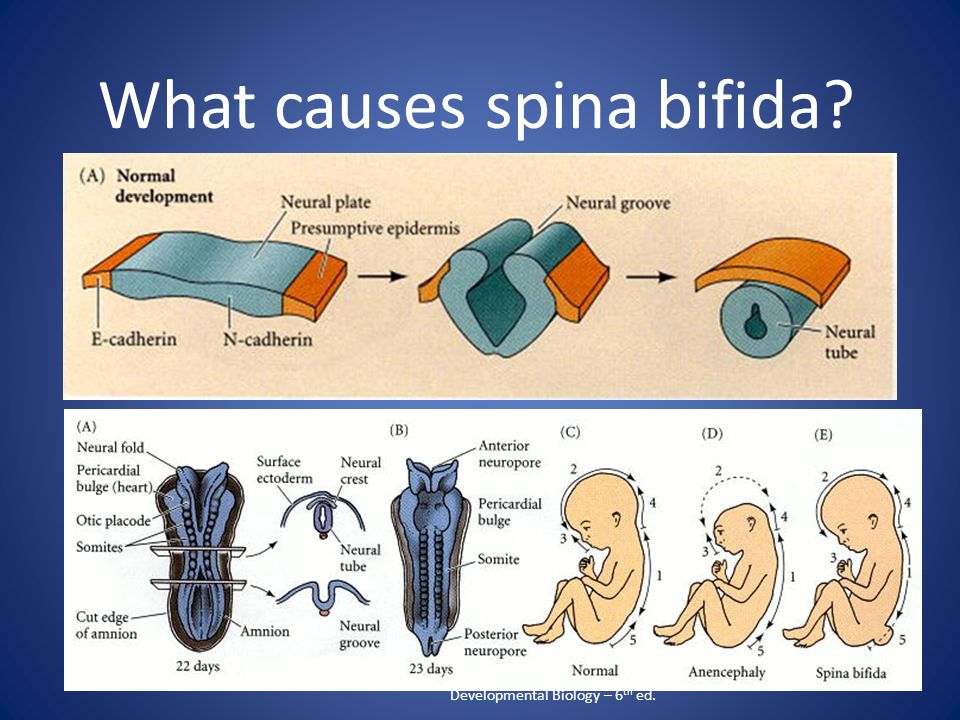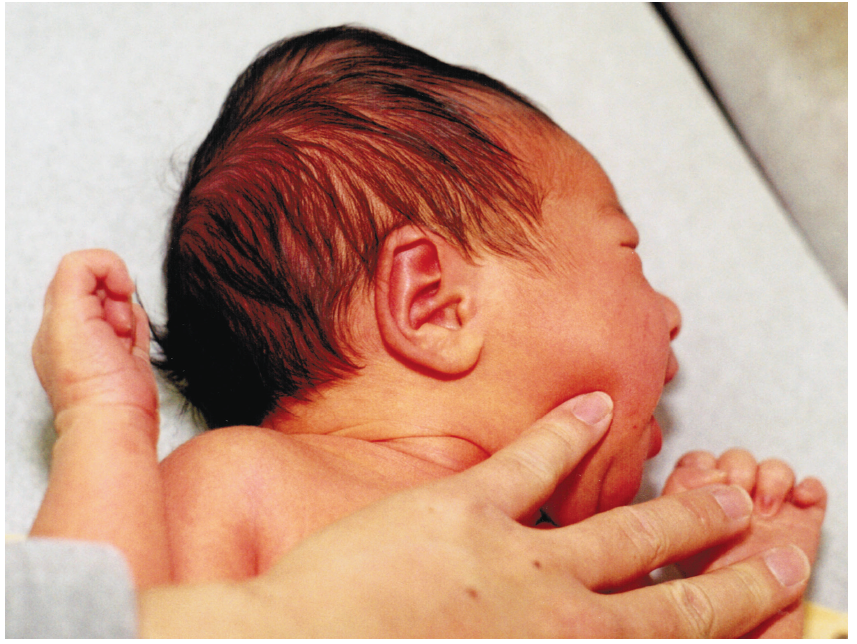Having trouble conceiving
Having trouble conceiving | Jean Hailes
Endometriosis
Endometriosis is a common and often painful condition that affects approximately ten per cent of women. It occurs when the tissue that normally lines the uterus (the endometrium) grows outside the lining of the uterus. The misplaced tissue commonly grows on the uterine (fallopian) tubes, the ovaries or the tissue lining the pelvis (the peritoneum).
How does endometriosis affect fertility?
It is thought that around 30% of women with endometriosis are infertile, however further research is needed to confirm this.
In mild endometriosis there is no obvious reason why infertility occurs. It may be because the endometriosis cells release chemicals that interfere with the ability to conceive or affect early normal development of the embryo.
In moderate to severe endometriosis, scarring may cause interference with ovulation and the passage of the egg along the tube because of damage or blockage. It can also prevent the sperm from reaching the egg.
Not all women with endometriosis are infertile. Many women have children without difficulty, have already had children before they are diagnosed, or eventually have a successful pregnancy.
Treatment options
Surgical treatment of endometriosis, such as an operation called a laparoscopy to remove the endometriosis, is believed to increase the chances of pregnancy.
In an operation using laparoscopy the overall pregnancy rate was approximately 42% of women with endometriosis [1]. Approximately 45% of women will develop a recurrence of endometriosis after laparoscopic surgery for endometriosis [2].
If surgical treatment is unsuccessful, in vitro fertilisation (IVF) treatments may also be considered. However, before trying this form of treatment it is important that your endometriosis is properly treated, as the oestrogen levels involved may flare up any existing endometriosis.
Adenomyosis
Adenomyosis is a condition of the uterus (womb) where the cells which normally form a lining on the inside of the uterus also grow in the muscle wall of the uterus. If adenomyosis is centred in one area, it can lead to a mass of adenomyosis called an adenomyoma.
If adenomyosis is centred in one area, it can lead to a mass of adenomyosis called an adenomyoma.
Adenomyosis is only seen in women in their reproductive years because its growth requires oestrogen. After menopause, adenomyosis lessens because of the lack of oestrogen.
Does adenomyosis affect fertility?
Studies suggest there may be changes in the ability of the uterine muscles to contract appropriately. Also, these endometrial cells inside the muscle may release body chemicals which lead to subfertility.
Fibroids
Fibroids (also known as uterine fibromyomas, leiomyomas or myomas) are non-cancerous growths or lumps of muscle tissue that form within the walls of the uterus (womb).
Fibroids can vary in size ranging from the size of a pea to the size of a rock melon or larger.
It is not known exactly why fibroids occur. However, we do know that the female hormones, oestrogen (estrogen) and progesterone play a significant role in stimulating the growth of fibroids.
Fibroids occur in women of reproductive age, growing at varying rates until the onset of menopause, when they tend to decrease in size and may slowly shrink in size due to the loss of oestrogen and progesterone.
Do fibroids affect fertility?
Infertility is not a common problem for women with fibroids, less than 3% of women may have fertility problems as a result of fibroids. Fibroids can interfere with implantation of the embryo into the uterus, increase the risk of miscarriage or impact the progress of labour depending on the size and position.
Polycystic Ovary Syndrome (PCOS)
PCOS is the most common endocrine (hormonal) disorder in women. Symptoms include menstrual problems such as irregular periods and anovulation (lack of ovulation), high androgen (testosterone) levels which can cause male patterned hair growth and acne and metabolic problems which cause weight gain and an increased risk of type 2 diabetes.
PCOS and fertility
One of the first things you may have been told when diagnosed with PCOS was that the condition can affect your ability to have children.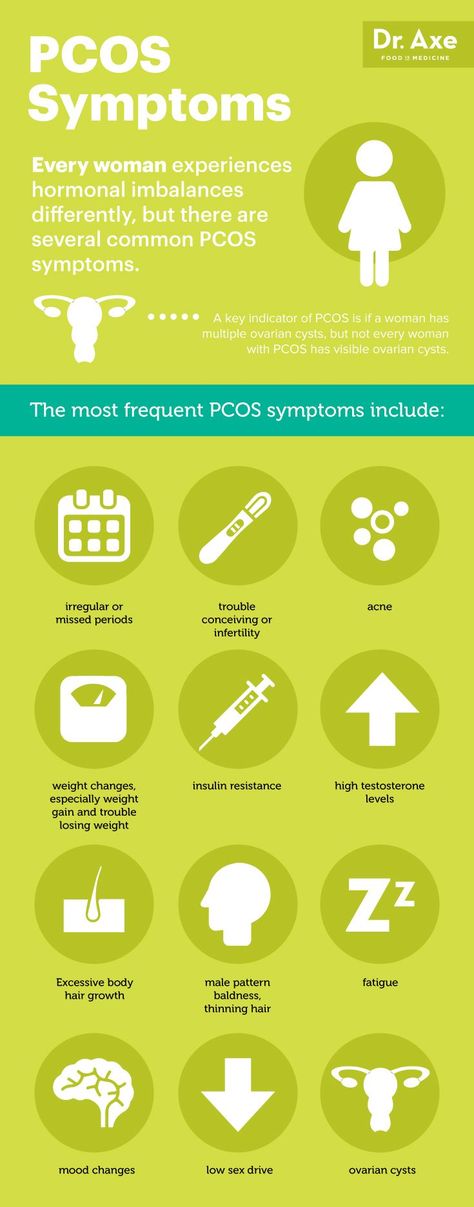 Whilst this is true for some women who have PCOS, 60% of women with PCOS become pregnant naturally. Some women may experience reduced fertility or it may take longer to conceive.
Whilst this is true for some women who have PCOS, 60% of women with PCOS become pregnant naturally. Some women may experience reduced fertility or it may take longer to conceive.
In women with PCOS the hormone changes that can cause irregular cycles may also affect ovulation and therefore affect fertility. Lack of ovulation is the most common cause of infertility in PCOS. An anovulatory cycle is a menstrual cycle in which ovulation fails to occur. This means that you do bleed but do not release an egg or ovulate.
In addition, body weight has an impact on fertility for women especially for those with PCOS.
Further help
There are many things you can do to improve your fertility and treatments are available if you have difficulty conceiving. See your doctor to first discuss treatment of your PCOS symptoms tailored to your individual needs. This might include some changes to lifestyle and/or medication.
Premature & early menopause
Premature menopause
Premature menopause is when the final period occurs before a woman is 40.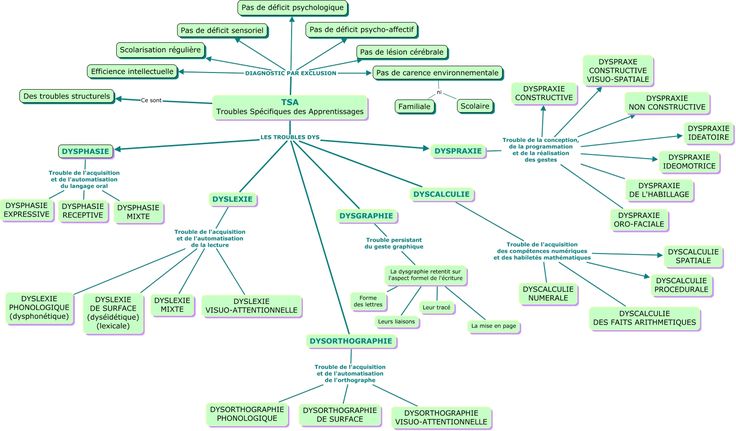 The reason for premature menopause may be because:
The reason for premature menopause may be because:
- your periods stopped spontaneously but early (premature ovarian failure)
- you have had surgery to remove both ovaries (oophorectomy)
- chemotherapy has caused ovaries to fail
Early menopause
Early menopause is when the final period occurs before a woman is 45. Again the reasons may be spontaneous, surgical or chemical.
Effect on fertility
With premature and early menopause, the ovaries run out of eggs earlier than expected and they are unable to produce an egg or the hormones required for pregnancy.
Very rarely, (about a 2-5% lifetime chance), a woman may have a spontaneous pregnancy after a diagnosis of premature/early menopause.
Sometimes, premature/early menopause is diagnosed when a woman has sought help for fertility. If the ovaries fail to respond to the hormones used to produce eggs or if eggs fail to fertilise, these may be signs of premature/early menopause developing.
For a woman who has gone through premature/early menopause, depending on her circumstance her options for having children include:
- a donor egg
- surrogacy with a donor egg
- adoption
To explore the best option for you, ask your doctor for a referral to a fertility specialist who is a member of one of the in vitro fertilisation (IVF) clinics.
Fertility & chemotherapy
If you have been diagnosed with cancer and premature/early menopause is likely to occur because of treatment for cancer, there are some things you can do before you have the treatment.
Before chemotherapy and/or radiotherapy, you could investigate your options for trying to preserve eggs for conception. There are a number of options including:
- egg preservation
- ovarian preservation
- ovarian biopsy and freezing
Egg preservation
This takes place before chemotherapy.
The ovaries are hormonally stimulated to produce eggs and the eggs are then collected.
If you have a male partner, the eggs can be fertilised with your partner's sperm and the embryos are then frozen. When you are ready for pregnancy, the embryos are transferred into the uterus.
If you do not have a partner, the unfertilised eggs may be frozen. When you are ready for pregnancy, the eggs are thawed and a male partner's sperm or donor sperm is used to fertilise them. (This technology is still in development and sadly the success is limited).
Ovarian preservation
Some women are given therapy with a GnRH agonist – a hormone that causes a chemical reaction to control the ovary and eggs temporarily. This therapy is given during chemotherapy. After the chemotherapy stops, the GnRH agonist stops and the menstrual cycle should return. This therapy is not well developed or researched.
Ovarian biopsy & freezing
This procedure takes place before chemotherapy starts. A piece of ovary is excised (cut away) and frozen. After the chemotherapy is complete, the ovarian tissue is transplanted under skin and with hormone stimulation, eggs are collected.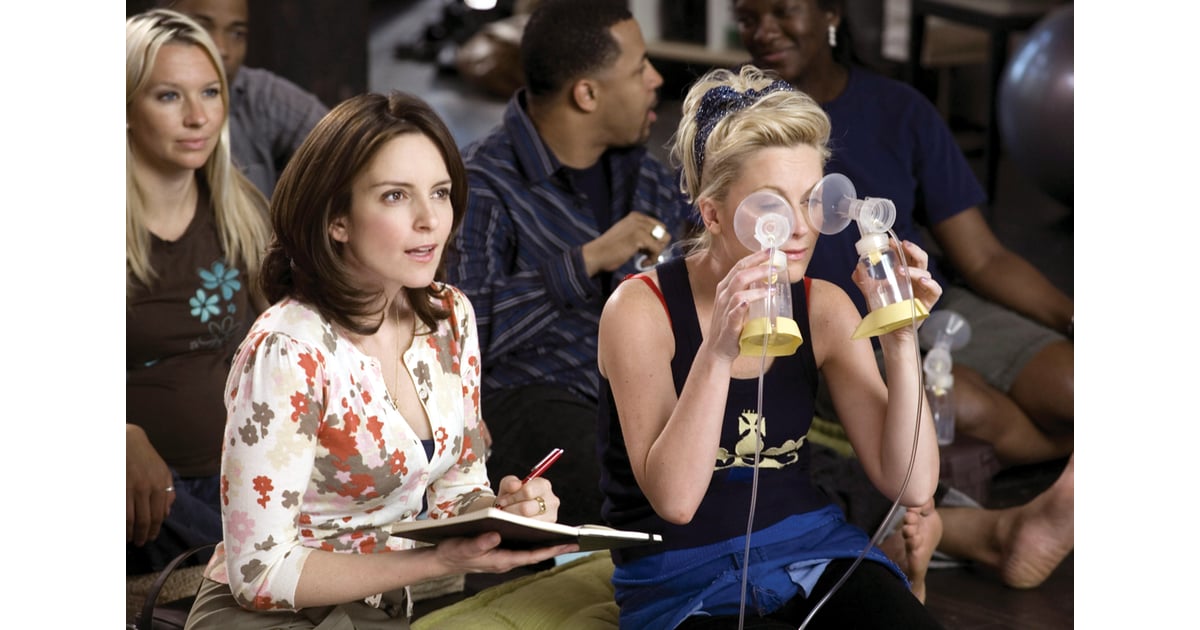 This technique has recently shown some success although is still in the research phase.
This technique has recently shown some success although is still in the research phase.
Thyroid problems
Your thyroid is a small bowtie or butterfly-shaped gland, located in your neck, wrapped around the windpipe. The thyroid gland takes iodine (mostly found in foods such as seafood and salt) to produce thyroid hormones. Two key thyroid hormones are triiodothyronine (T3) and thyroxine (T4). These hormones help oxygen get into cells and regulate the body's metabolism. The thyroid hormones also affect other important functions of the body such as growth.
There are number of factors that can put you at a higher risk of thyroid disease:
- A personal history of autoimmune conditions, including Type 1 diabetes
- If you have grown up in an area that was iodine deficient
- If you have been exposed to head and neck radiation in the past
Thyroid conditions affect women five times more often than men.
If the thyroid is underactive, symptoms of hypothyroidism may occur. An overactive thyroid gland produces excess thyroid hormones and is called hyperthyroidism.
An overactive thyroid gland produces excess thyroid hormones and is called hyperthyroidism.
How a problem thyroid affects fertility and pregnancy
According to Dr Jennifer Wong, a consultant endocrinologist at Monash Health, a number of health problems are associated with a problematic thyroid:
- Decreased fertility making it much harder to become pregnant
- Increased risk of miscarriage
- Increased risk of pre-term or early delivery
- Hypertension (high blood pressure)
- Premature birth
Diagnosing thyroid dysfunction
It is very important to detect thyroid problems in women pre-pregnancy and during the first 12 weeks of pregnancy as the foetus is dependent on the mother's thyroid hormone in the first trimester.
A simple, specific blood test will determine whether you have thyroid dysfunction. You can see your doctor for this test.
Thyroid treatment
If you are diagnosed with a thyroid condition, treatment is quite easy and manageable.
Premature & early menopause
Premature menopause
Premature menopause is when the final period occurs before a woman is 40. The reason for premature menopause may be because:
- your periods stopped spontaneously but early (premature ovarian failure)
- you have had surgery to remove both ovaries (oophorectomy)
- chemotherapy has caused ovaries to fail
Early menopause
Early menopause is when the final period occurs before a woman is 45. Again the reasons may be spontaneous, surgical or chemical.
Effect on fertility
With premature and early menopause, the ovaries run out of eggs earlier than expected and they are unable to produce an egg or the hormones required for pregnancy.
Very rarely, (about a 2-5% lifetime chance), a woman may have a spontaneous pregnancy after a diagnosis of premature/early menopause.
Sometimes, premature/early menopause is diagnosed when a woman has sought help for fertility.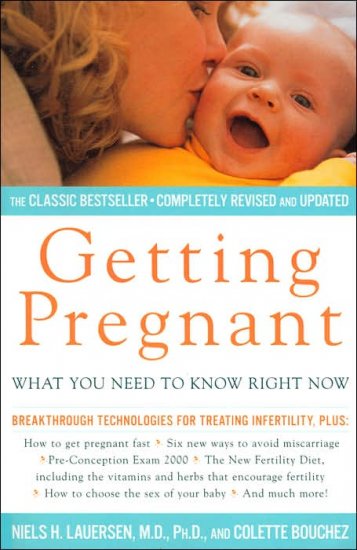 If the ovaries fail to respond to the hormones used to produce eggs or if eggs fail to fertilise, these may be signs of premature/early menopause developing.
If the ovaries fail to respond to the hormones used to produce eggs or if eggs fail to fertilise, these may be signs of premature/early menopause developing.
For a woman who has gone through premature/early menopause, depending on her circumstance her options for having children include:
- a donor egg
- surrogacy with a donor egg
- adoption
To explore the best option for you, ask your doctor for a referral to a fertility specialist who is a member of one of the in vitro fertilisation (IVF) clinics.
Turner's syndrome
The most common genetic cause of infertility in women is Turner's syndrome.
Turner's syndrome is a chromosomal condition that alters development in females. This condition occurs in about 1 in 2,500 female births worldwide.
It is caused by the complete or partial lack of one of the X chromosomes (female sex chromosome). This results in a range of complications, including stunted growth and development, deafness, an increased risk of heart and kidney problems and infertility. Women with this condition tend to be shorter than average and are usually unable to conceive a child because of an absence of ovarian function.
Women with this condition tend to be shorter than average and are usually unable to conceive a child because of an absence of ovarian function.
The majority of women with Turner's syndrome are infertile. There are two types of Turner's syndrome – XO who never have periods and XX/XO Mosaic who can have periods but have an early menopause. Spontaneous pregnancies (less than 5% of women) are associated with a high risk of miscarriage, and chromosomal and congenital abnormalities.
Pregnancy can be achieved at present through IVF technology with donor egg or embryo.
Due to early menopause, women with Turner Mosaic syndrome should not delay exploring their pregnancy options for too long, if this is possible.
Counselling regarding fertility and pregnancy is highly recommended for all women with Turner's syndrome.
Why Can’t I Get Pregnant?
When you’re ready to start a family and you’re not getting pregnant, it can be frustrating and overwhelming. Especially if you’ve tried the conventional methods to maximize your chances: having frequent intercourse during your fertile window, tracking your temperature every morning and using tools like ovulation tracker apps and predictor kits.
You may start to wonder — is this a medical problem or do I simply need to be more patient? You’re not alone. One in 8 couples struggles to conceive. Chantel Cross, M.D., a reproductive endocrinologist and infertility specialist with the Johns Hopkins Fertility Center at the Johns Hopkins Health Care & Surgery Center — Green Spring Station in Lutherville, Maryland, explains what factors might be affecting your ability to get pregnant and when you might consider infertility treatment.
How is infertility defined?
Infertility is defined as the inability to become pregnant after one year of unprotected sex for women under 35 and six months for women 35 and older.
“The vast majority of people will become pregnant within the first 12 months of trying to conceive with regular unprotected intercourse,” says Cross. “After six months to a year of trying — depending on a woman’s age — we recommend that a couple comes in for an infertility evaluation. At that point, it’s more likely that there’s a problem preventing pregnancy.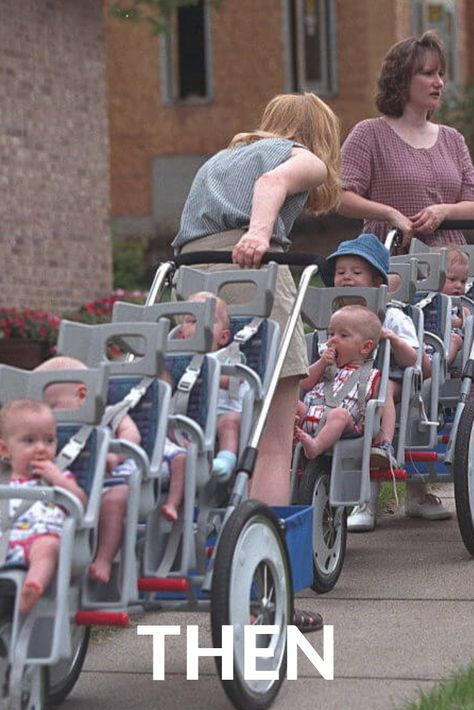 ”
”
Medical Conditions Affecting Infertility
One or more factors may contribute to infertility. The most common problems include:
Fallopian tube obstruction
Blocked or scarred fallopian tubes that prevent sperm from reaching the egg are a frequent cause of infertility, especially among African Americans. A history of pelvic infection, sexually transmitted disease or endometriosis increases your risk for fallopian tube obstruction.
Irregular uterine shape
An irregularly shaped uterus can make it difficult for a fertilized egg to attach to the uterine wall. Abnormalities can be caused by uterine fibroids (noncancerous growths on the uterine wall) or scar tissue from surgery or infection. It could also be the way your uterus is shaped.
Ovulation disorder
Sometimes women don’t ovulate regularly and consistently. Sporadic menstrual cycles can be caused by conditions such as polycystic ovary syndrome (PCOS), hormonal imbalances or obesity. Ovulation can also be impacted by excessive exercise, stress or low body weight.
Ovulation can also be impacted by excessive exercise, stress or low body weight.
Male factor
In more than 30 percent of infertility cases, there’s a problem with sperm such as low sperm count or abnormal sperm movement or shape. Male factor infertility can be due to a number of reasons including trauma, medical conditions like diabetes and unhealthy habits such as heavy drinking and smoking.
The Impact of Stress on Fertility
It’s normal to feel anxious when you’re trying to conceive. But whether or not that impacts fertility is up for debate. What we do know is that managing stress is good for you, no matter what life stage you’re in.
Age Is a Major Factor for Women
You’ve probably heard the phrase “your biological clock is ticking.” This phrase refers to your fertile window. Women can’t conceive after their menstrual cycles stop, usually sometime in your 40s or 50s. Men produce sperm throughout their lives, but women are born with a set number of eggs that decreases as you age.
“At birth you have about two million eggs but naturally lose hundreds of thousands of them by the time you reach puberty,” says Cross. “Your body continues to lose eggs no matter what you do. And the rate at which women lose eggs accelerates around the age of 37.”
The quality of eggs stored in the ovaries also declines over time. “The eggs you’re born with are naturally paused in the process of dividing their DNA,” Cross explains. “They complete that process, or ripen, when you ovulate them 20 to 40 years later. The longer eggs are stuck in the mid-division stage, the more likely that process will go wrong — creating eggs with the wrong number of chromosomes. That results in not becoming pregnant, experiencing miscarriages or having babies with genetic syndromes due to chromosomal abnormalities.”
The bottom line: The quality and number of eggs a woman has decreases throughout her lifetime and egg loss accelerates around the age of 37, which makes it more difficult to become pregnant.
Do I Need Infertility Treatment?
If you’re having trouble conceiving, an infertility specialist may be able to help. The first step after 12 months of trying to conceive (six months if you’re 35 or older) is to schedule an infertility evaluation. This multipart assessment includes:
- Physical examination
- Pelvic ultrasound
- Blood work
- Semen analysis
- Evaluation of the uterus and fallopian tubes (by specialized x-rays or ultrasounds)
If you or your partner have a known medical condition that affects the uterus, fallopian tubes, sperm or ovulation, talk to your doctor to see if you should be evaluated sooner. For example, if you know that both of your fallopian tubes are blocked, you’ll need to see an infertility specialist even before trying to get pregnant.
Infertility treatment options
Depending on the results of your infertility evaluation, there are several treatment options:
- Ovulation medications: Oral or injectable medications improve ovulation patterns or may encourage more than one egg to be released each month, increasing the likelihood of conceiving.

- Intrauterine insemination (IUI): This procedure can be performed on its own or in combination with ovulation medications. A small catheter places good-quality semen directly into a woman’s uterus, eliminating the need for sperm to swim up the vaginal canal.
- In vitro fertilization (IVF): During this procedure, one or more eggs is removed from the ovaries and fertilized with sperm in a lab setting. The resulting embryo is then implanted into the uterus, bypassing fertilization challenges within the body.
Every couple and their journey to start a family is unique. Talk to your doctor about your options.
Fomin's clinic — a network of multidisciplinary clinics
If pregnancy does not occur within six months of active sexual life, then this is one of the signs of infertility. But don't panic. This does not mean at all that you have infertility, perhaps it is enough for you, for example, to adjust your diet. Second, infertility is treated. Well, you should not immediately cheat yourself on the subject of IVF. Remember, infertility is not the same as IVF.
Well, you should not immediately cheat yourself on the subject of IVF. Remember, infertility is not the same as IVF.
Infertility is a diagnosis that 10% of women all over the world have to live with: according to statistics, every fourth married couple is infertile. In this article we will talk about what female infertility is, how to live with it and whether it can be overcome.
Female infertility is a diagnosis made after a year of unsuccessful attempts to have children, subject to regular sex with a partner without contraception. If a woman is older than 35 years, the diagnosis is made faster - after 6 months. After 35 years, the ability to conceive gradually decreases, so older women should not delay treatment.
However, one should not rush to sad conclusions either. According to statistics, even completely healthy couples under the age of 30 manage to conceive a child in the first three months only in 20-37% of cases. At the same time, after six months, pregnancy occurs already in 80% of couples. Until a year has passed from the first attempt, there is no need to worry, be examined, and even more so, to be treated.
Until a year has passed from the first attempt, there is no need to worry, be examined, and even more so, to be treated.
Pregnancy depends on many reasons - in order for the "stars to align" and all the factors to coincide, sometimes it takes some time.
For example, it is known that the easiest way to get pregnant is to make love 3-4 times a week. But a break of more than 5 days can adversely affect the quality of spermatozoa.
In addition, much depends on the lifestyle of parents - stress and heavy workload reduce fertility in both men and women. It's no surprise that many successful pregnancies have started during family vacations.
If less than 6-12 months have passed since the first attempt, you can try several "life hacks":
Choose the best time to conceive. According to some reports, the day of ovulation and 2-3 days before it are best suited for conception. To find out when ovulation occurs, a urinary express test for luteinizing hormone will help - a day or two before ovulation it will become positive. However, calculating the optimal time is not always the best option.
However, calculating the optimal time is not always the best option.
I always oppose the calculation of the optimal time for conception, because because of this, sex begins on a schedule in a couple's life, and this is one continuous stress. It seems to me that it is more reasonable to have sex 2-3 times a week during the entire cycle.
Kosolapova Inna Vladimirovna, gynecologist-reproductologist of the Fomina Clinic, chief physician
Do not use lubricants. Water-based, oil-based and silicone-based lubricants reduce sperm survival. But lubricants based on hydroxyethylcellulose have less effect on sperm survival - so if there is a lack of lubrication, you can continue to use them.
Stop dieting. Good nutrition is the key to a successful pregnancy. But don't overeat either. There is evidence that a body mass index (BMI) of 19 is ideal for pregnancy.-thirty. In women who have a BMI greater or less, the time to conception increases.
You can calculate your BMI manually by dividing your weight by your height squared. Alternatively, you can use the built-in calculator on the website of the medical organization, or download a special application.
Alternatively, you can use the built-in calculator on the website of the medical organization, or download a special application.
Quit smoking and alcohol. Smoking increases the risk of infertility by 1.6 times. It is also better not to abuse alcohol - eat more than 20 grams of ethanol per day, the risks of "earning" infertility increase by 60%.
On the other hand, the position of the body during sex, based on the available data, does not affect the result in any way. The "missionary" position is suitable for conception just like any other.
If more than a year has passed and nothing helps, it's time to see a doctor. The diagnosis of "infertility" has the right to make only an obstetrician-gynecologist (reproductologist).
It is important to understand that infertility is not only a woman's problem. According to statistics, in the absence of children in a third of cases, the mother is “to blame”, in a third - the father, and in another third of cases the cause of infertility cannot be established. This means that with the diagnosis of "infertility" it is necessary to examine both partners.
This means that with the diagnosis of "infertility" it is necessary to examine both partners.
Male infertility is diagnosed by a urologist/andrologist. But if you go to a family planning center, a reproductologist can make a diagnosis.
Most often, female infertility is associated with problems in the reproductive system: in the ovaries, fallopian (or fallopian) tubes, through which the egg passes from the ovaries to the uterus, and in the uterus itself. To figure out what exactly “broke down” in the female reproductive system, the doctor will collect an anamnesis, carefully examine the patient and prescribe tests. We talk more about this in the article "Diagnostics of female infertility".
Infertility is treated, and quite successfully — according to statistics, after diagnosis and therapy, children appear in 50% of women (without the use of assisted reproductive technologies: IVF, etc.). On the other hand, success depends on many factors, from the age and history of previous pregnancies to problems with the partner's sperm. Many factors influence the possibility of getting pregnant, so it can be difficult to predict the result.
Many factors influence the possibility of getting pregnant, so it can be difficult to predict the result.
If the problem is overweight or underweight, it is often enough to normalize the weight for a successful pregnancy. True, much more often the problem is associated with sex hormones - in this situation, the doctor will select the appropriate medication. And if the problem is in the obstruction of the fallopian tubes or in the uterus itself, surgery may be required.
In vitro fertilization (IVF) is available for patients for whom these treatments are not suitable or have not worked.
The essence of IVF is that the patient's ovaries are stimulated with the help of hormones, then the egg is taken and fertilized with the husband's sperm, then the embryo is "grown" for some time in a special incubator and transplanted into the mother's uterus. A baby is born in the same way as other children conceived "naturally".
In Russia, the IVF procedure can be done free of charge under the CHI policy. However, it is important to understand that this is a complex treatment method that requires serious preparation and gives the best result until the age of 40-45. It is difficult to predict how successful IVF will be. According to statistics, the procedure ends with the birth of a live and healthy baby in about 27% of cases.
However, it is important to understand that this is a complex treatment method that requires serious preparation and gives the best result until the age of 40-45. It is difficult to predict how successful IVF will be. According to statistics, the procedure ends with the birth of a live and healthy baby in about 27% of cases.
At the same time, IVF success rates vary greatly not only in different countries, but also in different clinics in the same city. There are clinics in which in 30-40% of cases it is possible to achieve a positive result on the first try.
Very often, mothers are concerned about possible health problems that may occur in children conceived through IVF. But in recent times there has been much less cause for concern than 20 years ago.
When the method was first created, all viable embryos that were obtained after fertilization were placed into the uterus of mothers “just in case”. If everyone took root, the mother often gave birth to twins or triplets, and sometimes “quadruples”. It is much harder to bear several children than one - and after all, mothers already had problems with pregnancy, otherwise IVF would simply not have been required.
It is much harder to bear several children than one - and after all, mothers already had problems with pregnancy, otherwise IVF would simply not have been required.
Today, the goal of the procedure is the birth of one healthy baby, so mothers transfer only one, maximum two of the best embryos. As a result, most children born after IVF do not differ much from their peers.
- Female infertility is as common as male infertility. If you can’t get pregnant within a year, you need to be examined, and sometimes treated together with your spouse.
- Infertility is a complex diagnosis that can have many causes. However, after treatment, about half of women successfully become pregnant and give birth to healthy babies (without IVF).
- IVF is a fairly effective way to give birth to a healthy baby. However, this method (like any other) has pros and cons, so you need to make a decision after consulting with an obstetrician-gynecologist or reproductologist.

Follow us
Causes of infertility in men
Treatment of infertility
assess the need to see a doctor
Myths about infertility
- MYTH: If a man has ejaculation, then he has no problems with the reproductive system
- TRUE: The presence of ejaculation does not guarantee the absence of problems, because sperm count and sperm quality may be low/extremely low. For accurate diagnosis, additional methods for studying the state of the male reproductive system and sperm are needed.
What is infertility?
Having avoided pregnancy for many years into adulthood, many do not expect that conception is actually not as easy as it seems. You are not alone in trying to get pregnant. According to statistics, about 1 out of 10 people suffer from infertility. 1
Infertility is defined as the inability to conceive within 12 months of unprotected and regular intercourse before age 35. 1.2 If your partner is older than 35, then this time interval for spontaneous conception is reduced to 6 months. 1
1.2 If your partner is older than 35, then this time interval for spontaneous conception is reduced to 6 months. 1
Sometimes a couple who already has a child fails to conceive again. This condition is called secondary infertility.
Is this my fault?
There are many factors that can cause infertility.
- About 1/3 of couples with infertility are female factors
- In 1/3 of couples with infertility, the cause is male factor
- In 1/3 of couples with infertility, the cause is a mixed (male and female) factor
Infertility is not a permanent condition, and it does not mean that you will never have children. You may just need the help of a specialist to achieve your goal - pregnancy.
causes of male infertility?
The doctor may carry out a series of diagnostic tests to determine the cause of infertility.
There are many reasons that can prevent conception, including:
- Insufficient concentration, motility or shape of spermatozoa necessary for normal conception
- Existing medical problems affecting the reproductive system, such as insufficient sperm production or narrowing of the vas deferens
- Spermatozoa may not have enough energy to fertilize an egg
- A woman's reproductive function may decrease with age 3
Depending on the identified disease, the doctor will prescribe the appropriate treatment..jpg)
Unfortunately, sometimes idiopathic infertility can be observed, in which no specific cause is identified that prevents pregnancy. In this case, the doctor may recommend the use of assisted reproductive technologies (ART).
One of the most common causes of male infertility is a problem with sperm production.
Although only one sperm cell is required to fertilize an oocyte, enzymes from several sperm cells are needed to break down the protective barrier of the egg cell.
In order to become pregnant, semen must have:
- High concentration: each milliliter of semen 5 must contain at least 15 million spermatozoa
- Good mobility: active movements of the sperm tail allow it to reach the egg
- Normally shaped spermatozoa: healthy semen contains regular tadpole-like spermatozoa
Modern high-precision studies reveal the fact of a decrease in sperm quality: a small number of spermatozoa (oligozoospermia) or the absence of spermatozoa in the ejaculate (azoospermia). In this case, the doctor may recommend microsurgery to remove sperm from the reproductive tract to help achieve pregnancy with the partner's own cells.
In this case, the doctor may recommend microsurgery to remove sperm from the reproductive tract to help achieve pregnancy with the partner's own cells.
There are a number of problems associated with impaired sperm production that can lead to infertility:
Varicose veins of the scrotum (varicocele)
- Varicocele is a disease accompanied by varicose veins. In this case, the testicles overheat, reducing the production of sperm
- Recommended surgical treatment
Testicular injury
- Serious testicular injury can affect sperm production
- Injury to the testicles from sports or accidents can rupture blood vessels that supply the testicles with blood
- These injuries are extremely difficult to treat, but the use of ART can help you get pregnant
Undescended testicle
- During prenatal development, male testicles form in the abdomen and descend into the scrotum shortly before birth
- In some men, the testicles do not descend before birth (cryptorchidism), although in these cases they usually descend in the first six months after birth
- If cryptorchidism is not treated, undescended testicles may affect fertility
Testicular cancer
- In testicular cancer, a malignant tumor destroys testicular tissue
- If not detected early, testicular cancer tends to spread to other parts of the body
- Testicular cancer treated with surgery, drugs, radiation or chemotherapy
- However, such therapy may also interfere with normal sperm production
Genetic disorders
- Sometimes the genetic information on the Y chromosome (which is present only in males) is damaged (microdeletions) 6 which can reduce sperm production
- The degree of male infertility and methods of its treatment depend on the location of the microdeletion on the chromosome
- In some cases, infertility can be overcome by surgical removal of sperm from the male reproductive tract
- In some cases, couples have to consider using donor sperm to conceive
Infectious mumps (mumps)
- Infection with mumps (or mumps-related orchitis) after puberty can damage the spermatozoa in the testicles, causing infertility or subfertility 7
- Usually only one testicle is affected, and if a man has one functioning testicle, treatment may not be needed
- Some couples may need to consider using donor sperm to conceive
Antisperm antibodies
- Antisperm antibodies are circulating proteins that damage sperm
- They may cause spermatozoa to stick together and interfere with their movement, or they may mistake spermatozoa for bacteria and try to kill them
- Anti-sperm antibody infertility can be overcome with ART
Lifestyle
- Sperm production can be affected by a range of lifestyle factors: smoking, alcohol, drugs, stress, overweight and unhealthy diet
- Environmental factors can also affect sperm quality, including overheated testicles, certain sexual lubricants, chemicals involved in certain manufacturing, painting, or printing jobs
- These factors can be eliminated by lifestyle changes, such as wearing loose clothing to avoid overheating, etc.

Hormonal problems
- Hormonal problems rarely cause male infertility
- However, some men have a natural deficiency of follicle-stimulating hormone (FSH) or luteinizing hormone (LH), which prevents the testicles from producing testosterone and sperm
- Hormonal problems can usually be treated with drugs
Narrowing of the vas deferens
- Sometimes the male vas deferens (epididymis and vas deferens) can be blocked resulting in no sperm in semen
- This can be cured with surgery, or sperm can be surgically removed from the testicles
Vasectomy
- Some men undergo vasectomy to prevent conception
- Sometimes the structure of the ducts can be corrected with surgery
- Sometimes the structure of the ducts can be corrected with surgery
Previous infections
- Infections can cause scarring or adhesions in the vas deferens
- This can usually be cured with surgery
Does age affect the male reproductive system?
Unlike women, whose fertility declines significantly after age 35, men's fertility declines more slowly.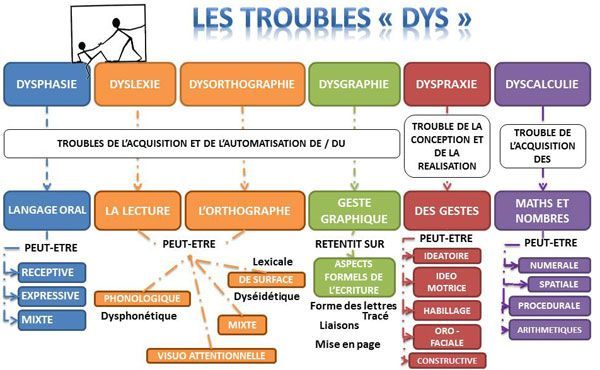 Although sperm quality declines as men age, this may not affect fertility until age 60. 3
Although sperm quality declines as men age, this may not affect fertility until age 60. 3
Find out more about how age can affect male fertility and why it's best to seek advice to get pregnant as early as possible
In most cases, there are no obvious symptoms of male infertility, especially if the partner is sexually active and do not suffer from erectile dysfunction.
If a man is concerned about the state of the reproductive system, it is best to consult a doctor. They will recommend some simple reproductive tests, more information about which can be found here.
Over the past three decades, the science of human reproduction has made significant progress and has helped millions of couples overcome infertility and have children of their own. 8
If a doctor diagnoses infertility, then most likely the man will need additional help to successfully conceive.
At first you will be asked to start with simple things like timing your sex, you may need more advanced fertility treatments.




